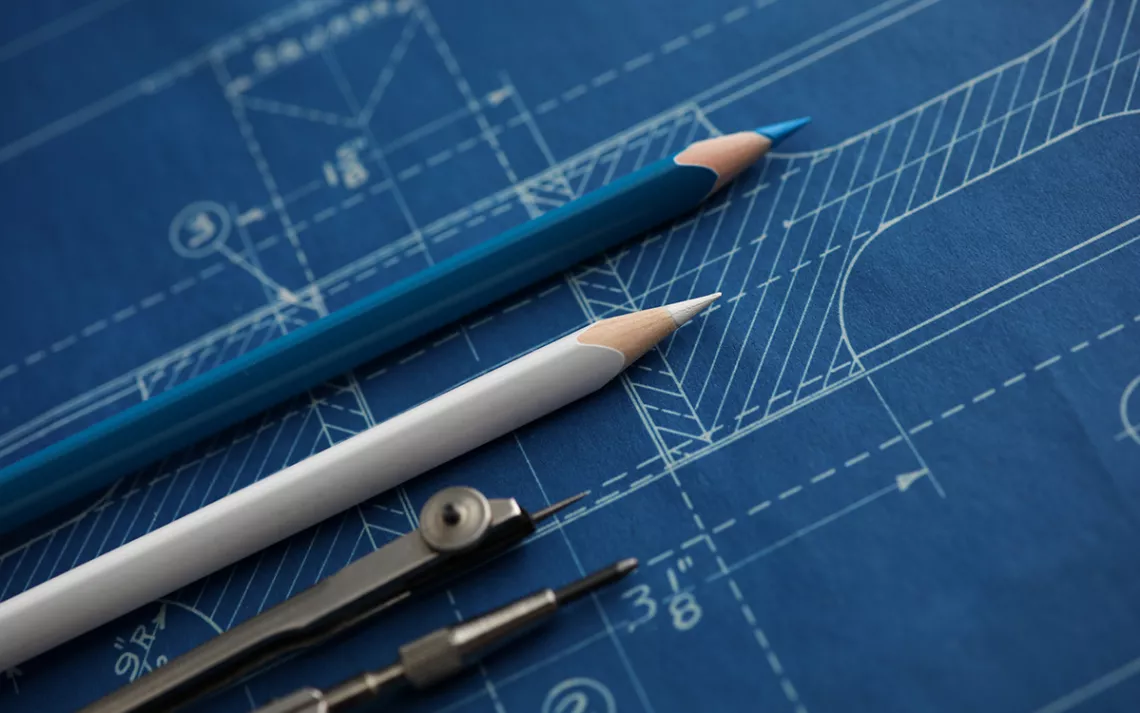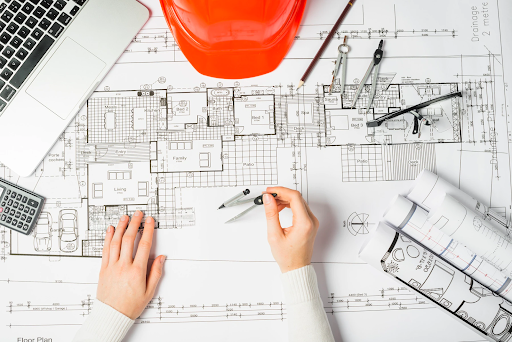Recognizing the Diverse Career Paths Available for Aspiring Architect
As an ambitious Architect, you have a world of occupation courses awaiting you. Each course provides special obstacles and possibilities to use your creative thinking and technological knowledge. Whether you're drawn to conventional style or the subtleties of lasting style, there's a specific niche that lines up with your interests. Recognizing these varied choices can form your professional journey, but which direction will you choose to discover initially?
Typical Design: Creating Buildings and Frameworks
Traditional design concentrates on making buildings and frameworks that blend functionality with aesthetic appeal. As you discover this field, you'll value the complex balance in between kind and purpose. You'll find out to draw ideas from historic designs, including elements like proportion, materials, and workmanship. Your designs can show cultural heritage, showcasing local traditions while meeting modern needs.
You'll create abilities in drafting, model-making, and site evaluation, allowing you to imagine and connect your ideas successfully. Involving with customers, you'll need to comprehend their vision and translate it right into practical designs.
Additionally, developing codes and sustainability techniques are vital in your job, guaranteeing your structures are ecologically friendly and risk-free. As you expand in your job, you'll discover opportunities in residential, industrial, or even restoration projects, each offering one-of-a-kind challenges. Welcoming standard architecture leads the way for a satisfying occupation that admires the past while forming the future.
Urban Planning: Forming Communities and Public Spaces
As an aspiring Architect, you can play a necessary function as an urban organizer, changing just how neighborhoods connect and function. By utilizing community interaction methods, you'll assure that locals have a voice in forming their setting. Plus, incorporating sustainable layout principles will assist develop areas that not only meet today's needs but additionally safeguard the future.
Duty of Urban Planners
While many might think of engineers as the single visionaries behind buildings, city organizers play an important function fit the more comprehensive landscape of communities and public areas. They evaluate land usage, zoning laws, and neighborhood requires to create lasting settings that enhance lifestyle. By teaming up with numerous stakeholders, you'll aid design parks, transport systems, and houses that promote social interaction and availability. Urban organizers also focus on environmental factors to consider, ensuring that growths incorporate environment-friendly spaces and support biodiversity. Your know-how in spatial design and area characteristics enables you to envision future development while maintaining social heritage. In this critical function, you'll directly affect how individuals experience their surroundings, making every task a possibility for favorable change.
Neighborhood Involvement Approaches
Efficient area involvement methods are important for urban planners to assure that the voices of homeowners are listened to and valued in the preparation procedure. To promote meaningful dialogue, you need to prioritize open forums and workshops where neighborhood members can reveal their ideas and concerns. Use studies and social media to get to a wider target market, making sure diverse viewpoints are consisted of. Collaborating with regional companies can enhance trust fund and help with much deeper links. It is necessary to provide clear details about proposed jobs and decision-making procedures, permitting citizens to feel educated and empowered. By actively listening and including feedback, you'll produce spaces that show the neighborhood's demands, ultimately causing even more lasting and effective metropolitan atmospheres. Embrace transparency and continuous dialogue for lasting impact.
Sustainable Style Principles
When designing metropolitan spaces, including lasting style concepts is important for developing atmospheres that grow both ecologically and socially. Consider incorporating environment-friendly spaces, like parks and gardens, to boost biodiversity and enhance air top quality.
Creating with water preservation in mind is additionally crucial-- think of rainfall yards and absorptive surface areas to take care of stormwater. Including community members throughout the planning procedure warranties that the spaces you produce satisfy their requirements and encourage social communication. By embracing these principles, you'll add to lively, lasting metropolitan landscapes that profit everyone.

Landscape Style: Creating Sustainable Outside Settings
As you check out landscape architecture, you'll discover important style concepts that produce lovely and practical outside areas. Sustainable techniques play an essential role in guaranteeing these settings prosper while decreasing environmental effect. Plus, you'll discover a variety of occupation possibilities that allow you to make an actual difference in just how individuals communicate with nature.
Layout Principles in Landscape
Understanding design concepts in landscape design is necessary for creating lasting exterior environments that harmonize with nature. You'll need to contemplate aspects like range, percentage, and balance to ensure your designs feel natural and inviting. Furthermore, pay attention to seasonal modifications, designing with products that match the environments year-round.
Lasting Practices Overview
Lasting practices in landscape style not only focus on appearances but also focus on environmental health and wellness and resource preservation. You can develop rooms that advertise soil wellness, such as practicing and utilizing organic materials permaculture concepts. Eventually, these techniques guarantee your styles benefit both people and the setting for years to come.
Profession Opportunities Exploration
With a solid foundation in sustainable methods, landscape design provides a selection of career courses that enable you to make a meaningful impact on the environment. Urban organizers frequently work together with landscape engineers to develop eco-friendly rooms in urban settings, boosting city livability. If you're enthusiastic concerning education and learning, think about coming to be a landscape design teacher, motivating future generations.
Sustainable Design: Focusing on Eco-Friendly Practices
As you explore your career in design, embracing environmentally friendly practices can establish you apart in an affordable area. Sustainable layout concentrates on producing buildings that reduce ecological effect while enhancing occupant health. By including eco-friendly materials, energy-efficient systems, and sustainable building techniques, you'll add to a greener future.
Begin by acquiring understanding of eco-friendly certifications like LEED or BREEAM, which can reinforce your qualifications. Think about just how natural light, air flow, and thermal performance can maximize design. Collaborate with engineers and environmental professionals to introduce solutions that lower waste and save sources.
Don't fail to remember the value of neighborhood involvement-- appealing local stakeholders can inspire styles that harmonize with the setting. As clients progressively prioritize sustainability, your experience in green methods will certainly not just draw in projects yet also satisfy your passion for responsible style. Accept this essential aspect of the profession, and see your occupation thrive.
Historic Preservation: Safeguarding and Bring Back Social Heritage
While you begin on your building journey, consider the important function of historic conservation in maintaining our cultural heritage. This field concentrates on the security and reconstruction of significant buildings, sites, and frameworks that tell the tales of our past. By involving in historical preservation, you'll assist secure the architectural tradition that forms area identification.
As a historic conservation Architect, you'll assess historic importance and examine the condition of structures. You'll work closely with historians and preservationists find out here to ensure authentic reconstruction strategies are used. This profession course allows you to blend creative thinking with research, enabling you to develop services that respect initial materials and craftsmanship.
Your work not only contributes to sustainability by recycling existing buildings however likewise cultivates a feeling of pride within neighborhoods. Accepting this path will assist you end up being a guardian of history, maintaining the stories and looks that improve our lives.
Interior Style: Enhancing Indoor Spaces
Historical preservation and interior architecture both share a dedication to boosting the constructed environment, yet they concentrate on different aspects. While historic preservation highlights keeping a framework's historical and social worth, indoor design zeroes in on enhancing interior spaces for capability and appearances.
As a hopeful Architect, you'll locate that interior style allows you to mix creative thinking with technological skills. You'll design rooms that not only look great however likewise advertise convenience and performance. This area involves comprehending just how light, shade, and products interact within a room, influencing state of mind and functionality.
You'll function on different jobs, from residential homes to business offices, guaranteeing that each environment satisfies the requirements site link of its residents. By focusing on user experience, you can change insides into motivating and useful rooms, making a substantial influence on just how individuals interact with their surroundings. Welcome the chance to enhance interior atmospheres and shape the way individuals live and work.
Industrial Style: Merging Functionality With Looks
Commercial design plays an essential function in producing items that flawlessly mix looks with capability, guaranteeing that what you use day-to-day is not only visually attractive yet also useful. As a hopeful Architect, you could immerse yourself in this area, concentrating on developing everything from furniture to customer electronics. Your job includes understanding individual requirements, materials, and manufacturing processes, allowing you to develop cutting-edge options that boost everyday experiences.
In industrial style, you'll typically team up with online marketers, designers, and makers, making sure that your designs are not just stunning however additionally practical. This profession path uses a dynamic environment where creativity meets usefulness, making it a fulfilling selection for architects interested in forming the products of tomorrow.
Frequently Asked Concerns
What Educational Certifications Do I Need to End Up Being a Designer?
To come to be an architect, you'll require a professional degree in architecture, commonly a Bachelor's or Master's. Furthermore, you'll need to complete a teaching fellowship and pass the Architect Enrollment Examination to practice legitimately.
Are There Accreditation Demands for Various Architectural Profession Paths?
Yes, there're qualification requirements for different building paths. Architect. You'll require to pass examinations, total teaching fellowships, and occasionally pursue specialized training, depending upon your chosen emphasis, like landscape design, urban design, or historical preservation
What Software Program Abilities Are Vital for Architects Today?

How Can I Gain Practical Experience While Researching Architecture?
You can acquire useful experience by interning at building companies, participating in style competitions, volunteering for community jobs, or teaming up with classmates on real-world jobs. These opportunities improve your skills and build important links in the industry.
What Job Opportunities Exist Outdoors Traditional Design Firms?
You can explore various task chances outside typical design firms, like urban preparation, interior design, landscape style, dig this building administration, genuine estate development, or perhaps roles in sustainability consulting. Each offers unique obstacles and benefits.
Whether you're attracted to typical design or the nuances of lasting design, there's a particular niche that aligns with your rate of interests.When designing city spaces, incorporating lasting style concepts is crucial for creating environments that thrive both environmentally and socially.As you check out landscape style, you'll discover important layout principles that create stunning and functional exterior areas.Recognizing design concepts in landscape style is vital for developing sustainable exterior settings that integrate with nature.In commercial layout, you'll usually collaborate with marketing professionals, engineers, and manufacturers, guaranteeing that your layouts are not just lovely yet also possible.